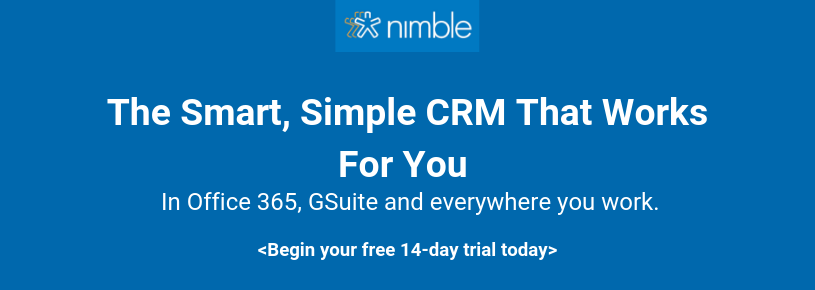Data is important for more types of organizations than ever before. No longer are giant corporations the firms that depend the most on big data for decision-making. Small businesses and even nonprofits rely on their data for support in nearly every aspect of their operations.
Your small business almost certainly already uses its data about customers and your interactions with them to help guide and refine your strategies. Marketing is where this type of data is typically the most immediately useful because it helps us to better target our messaging to particular segments of our bases. This can be invaluable when your business is looking to double down on improving specific metrics, like customer retention.
DNL OmniMedia provides data-driven digital strategy development, personalized tech solutions, and consultation services (including migrations) to nonprofit organizations. Check out our guide to creating a nonprofit digital strategy here for an overview of the type of work we typically do for our clients.
For both small businesses and nonprofits alike, proper data management should be a top concern. This is true not only because tidy, well-organized data leads to smarter strategy but also because you can risk a lot by being irresponsible with data, even accidentally.
In terms of risk, one of the most important points in your entire data lifecycle is the act of moving it from one central storage site to another. This is called data migration, and it’s the point when your data is the most vulnerable to hacking, damage, or simply loss. Data breaches, credit card fraud, and identity theft have sadly become regular parts of our lives, but your small business can (and should) do its part by understanding the importance of migrating data safely.
In this quick guide, we’ll cover the essentials by answering these questions:
- What is data migration?
- When and why do you need to migrate data?
- What are the steps of safe data migration?
- How do you get started?
Data migration is important, but it shouldn’t be daunting for your organization. Understanding what all it entails now will help you better prepare for the next time your small business needs to make tech upgrades that will involve migration. Let’s dive in.
What is data migration?
As mentioned above, data migration is essentially the act of moving your business’s data from one database, platform, or application to another.
“Data migration” is a fairly broad term that encompasses a lot of different projects and activities, and it’s a common necessity for businesses today. Organizations very frequently outgrow their data solutions and need to make upgrades. Plus, many small businesses are choosing to make the move to a CRM platform for the first time which then means they’ll need to upgrade from legacy, onsite data storage to cloud-based applications and storage platforms.
The same is true for nonprofits, as well. Cloud-based CRM software with broad ecosystems of integrated tools is the new norm for nonprofit organizations. Check out the TeamDNL guide to Raiser’s Edge if you’re curious to see one of the more popular nonprofit platforms in action.
When and why do you need to migrate data?
There are a million reasons why you might need to migrate your business’s data from one location to another. Typically, data migrations will fall into one of three categories:
- Storage migration – Moving data from one central database to a newer, more modern one that includes updated features and integrated tools.
- Cloud migration – Moving data from a physical data center to a cloud-based storage solution. With the rise of cloud-based database platforms, the categories of storage and cloud migrations have blended somewhat.
- Application migration – Moving a tool that you use (and its data) from one digital location to another. This category is fairly broad, including migrations of the whole application to a cloud or between clouds and moving only the application’s data to a new version that’s hosted elsewhere.
These categories can be confusing, but they basically all come down to moving your data from one location to another for any number of reasons. If you want (or need) to upgrade your database or applications, you’ll need to invest serious time and thought into the migration process.

Why? Because the potential repercussions of a poorly-planned or unsafe migration can be substantial, even catastrophic. There are a few reasons:
- Data is made vulnerable when it’s being moved between secure locations, open to hacking from outside unless strong encryption features are in place.
- Data becomes more complicated and ‘entangled’ over time and as your business generates and stores more of it. Moving a complicated architecture of data can result in unintentional breakages and crashes unless carefully planned.
- Data can also be potentially damaged, scrambled, or simply lost during a migration unless the process has been properly planned, tested, and overseen by an expert.
We mentioned in the previous section that data migrations of all types and scales have become increasingly common with the rapid rise of cloud-based technologies. The shared need of practically every business today to provide a positive, high-quality experience to their users has also led to more complicated interconnected sets of tools.
Providing a two-factor login process for users, for example, creates a much more secure experience but also creates the need for more applications to access more authentication data. This means the data needs to be as well-organized and easily accessible as possible in order to reduce the risk of anything going wrong on the user’s end. Added levels of complexity like this make strategic, safe, and effective data migrations more important than ever.
What are the steps of safe data migration?
Any well-planned and safe data migration will generally consist of the same steps. Your in-house professionals or tech consultants will follow this order:
- The planning stage. During this initial stage, you outline the parameters of the migration, check the data for viability, clearly outline your plan, and assign roles to each team member.
- Initiating the project. Formally begin the migration by briefing key stakeholders of the migration on the scope of your project.
- Landscape analysis. Take a close look at the data involved, clearly document your process, refine your estimates, and determine how to move off of legacy systems, if applicable.
- Designing a solution. During this stage, you’ll hammer down the specifics of your migration, including which data will be moved and how you’ll measure its quality both before and after the move.
- Build and test. You’ll then need to translate the migration logic into actual code that can be executed in a test mirror system.
- Execute and check. Execute the migration on the actual system, review that everything has complied with the parameters you determined, and check the quality of the data.
- Decommission and review. Safely shut down the old systems once the migration has completely ended, and continue to monitor the new system for any issues.
A wide range of additional steps and technology concepts fall within this general process. If you’re looking for more context, check out this Data Migration Checklist for an exhaustive explanation of each step in detail.
How do you get started?
Let’s say your small business is ready to upgrade to a new sales CRM. How do you get started even thinking about the process of safely migrating all your data into a new system?
Working with a technology consultant is always your safest bet.
A poorly-executed data migration process puts too much at risk to justify saving time or money by doing it on your own. If your business has an experienced in-house tech team, they might be comfortable managing the migration themselves. Otherwise, seek out the help of an expert.
As technology consultants for nonprofit organizations, we’ve helped to design and execute data migrations of all shapes and sizes as part of broader projects. For instance, much of our work involves designing nonprofit websites and custom integrations. Ensuring that data can flow cleanly from your website to its integrated database and then back again as necessary requires careful setup and strategic data architecture.
Conclusion
Regardless of why you need to undertake a data migration project or how complex or simple it might be, it’s very important to understand the risks of a poorly-planned or handled migration.
Especially for small and growing businesses, data loss or theft can be disastrous. If the need for data migration is coming up for your business, or if you think it might be time to conduct some tech upgrades, be sure to continue your research and learn as much as you can.


